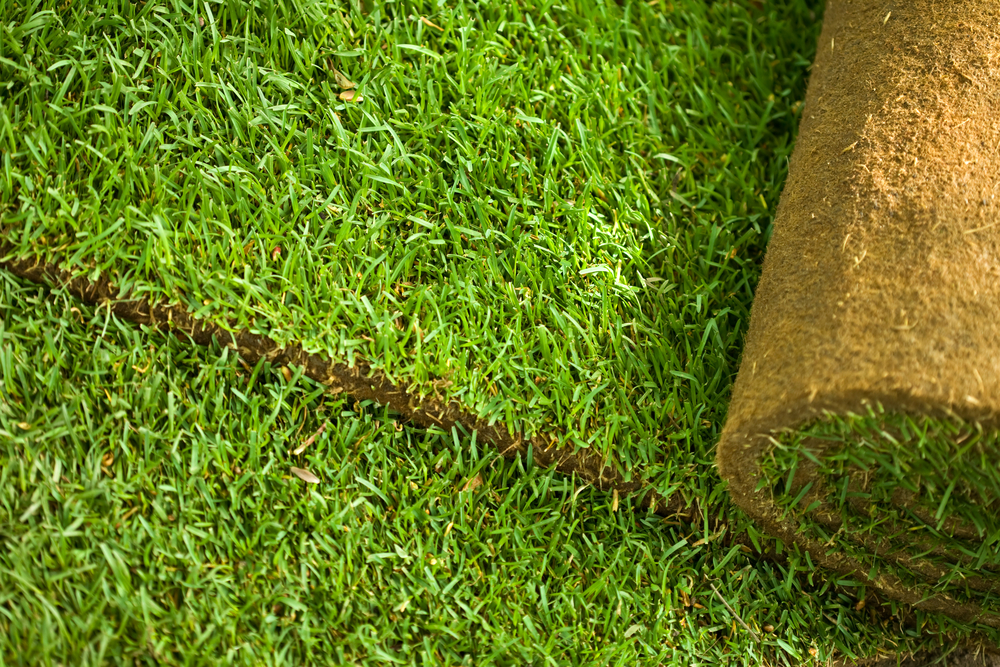
New Lawn Preparation For Seeding and Turfing
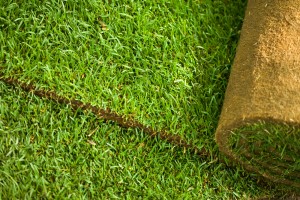
While digging over the soil in preparation for seeding or turfing a new lawn is the hardest work, the real skill comes in preparing the soil for sowing grass seed or laying turf.
There is no doubt the best quality lawn will come from seeding, but this very much depends on how well the new grass is cared for in the first few weeks after germination, and to be honest this is a very difficult task for anyone who is not a trained greenkeeper. I would always advise laying turf on a domestic lawn as the first option because the aftercare is so much easier.
The ground preparation is exactly the same for both options, the only difference being that turfing will cover over some small stones that would have to be removed if seeding.
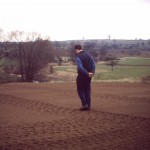
The first step after digging is to rake the soil, roughly leveling the surface and removing stones and other debris as you go. If seeding remove any stones that are more than ten mil in size, if turfing you can get away with double that size. This should be followed by treading, keeping your weight mainly on the heels which will ensure the soil is being well firmed and there are no soft spots that will sink and spoil the surface later on. In the process of treading it is easy to feel any high or low areas which can be roughly smoothed out using your feet. The process of raking and treading has to be repeated until the soil surface is firmed evenly with no high spots or depressions. When the surface is fully prepared you should be able to walk over it without leaving any depressions. It is well worth taking the time to ensure this preparation is carried out properly as once the grass is established any blemishes in the levels are much more difficult to repair. It is worth pointing out at this stage that a roller will never give an evenly compressed surface as the weight is spread over the full width of the roller making it impossible to find all the soft spots.
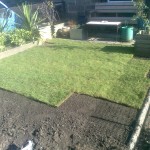
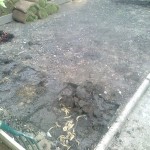
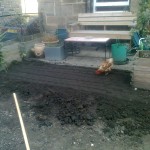
When you are satisfied that the soil is fully prepared the final operation before applying the seed or laying turf is to apply fertiliser to help the new lawn establish quickly. A preseeding granlar fertiliser with an NPK of 9.7.7 or similar will do the job, but I have always had better results by applying a dressing of bone meal at fifty grammes per square metre, along with seaweed meal at the same application rate. Whatever is used should then be raked into the surface to a depth of around twenty mil.
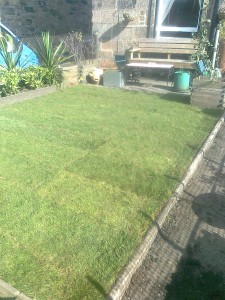
When turfing you should pick the starting point as the area with easiest access, then lay the first row of turf at right angles to the point of entry. From then on use planks to carry the turf into place and another plank on top of the previous row to stand on when laying the next one, this is to avoid unnecessary pressure causing depressions. The joints should be staggered on each row as in building a brick wall. A large flatbacked rake is ideal for tamping down each turf to give good contact with the soil, but standing on a plank on each row helps with this as well. To cut the turf into different lengths and shapes to fill in around the edges I prefer to use a sharp long bladed knife, but a well sharpened half moon edger will do the job ok, though not as accurately.
The surface is now ready for receiving the seed or turf. If seeding you should apply half the seed, followed by raking, then the rest of the seed followed by raking at right angles to the first time. To finish the operation the surface should then be lightly rolled, a cylinder mower with the blades raised is ideal, or if a roller is not available then tread keeping the feet flat. The firming of the surface after seeding helps with germination and establishment.
There we are then, a new lawn. But that is only the start of the process, it has to be well cared for right from the start to ensure the good work has been worth while. The aftercare for both turfing and seeding will be the subject of my next article.
Duncan


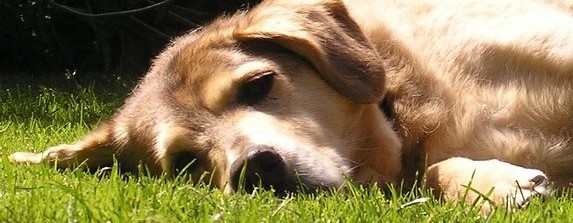
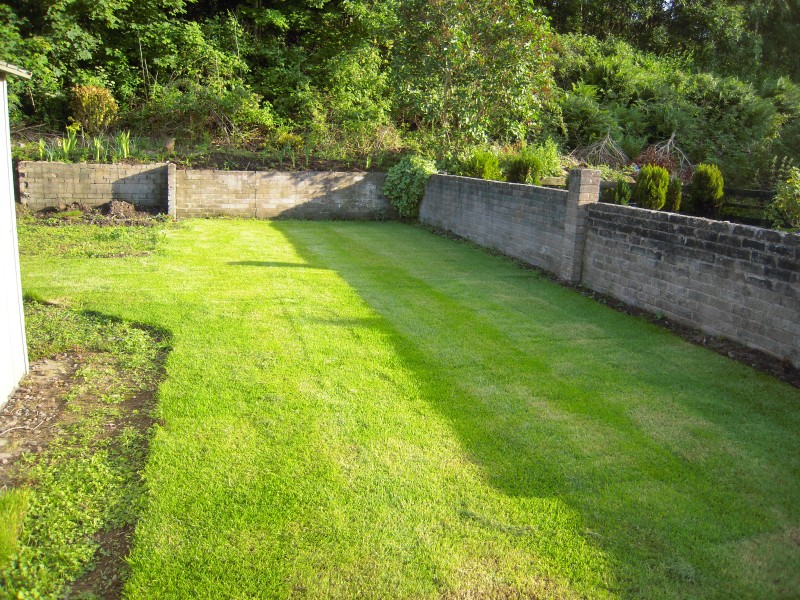
Very detailed post, I like it. As someone who is still new to turfing I appreciate every piece of information I find. I want to ask about the levelling stage of the turfing process. You do it by treading, yet I see my colleagues using a mini skid of some sort. I assume it’s far more efficient for compacting the soil, but do you recommend it? I mean in general, which is better? I know regular folk don’t need a mini skid and that’s fine, I’m just curious.
Thank you for your time 🙂
Hi Gardener in Walthamstow. Thanks for getting in touch.
Treading is really the only way to ensure there is a good even firming all over the surface. There are no machines that do the same job, but on big areas many landscapers use a motorised bunker raker to rake and consolidate the rootzone, which does a good job on sandy material.
It usually takes three to four treads and rakes to get the surface prepared properly.
On bad soil, or poorly drained areas, I always use a layer of washed sand to produce the final level before laying turf.
Duncan.
when overseeding and topdressing should I add some bonemeal before I start or mix it with the topdressing
Hi Lorraine, thanks for getting in touch. You can just spread the bone meal on it`s own, preferably on top of the top dressing. I would personally use seaweed meal, rather than the bone meal, using it in the same way. Seaweed meal has far more benefits, so is well worth using. Duncan.